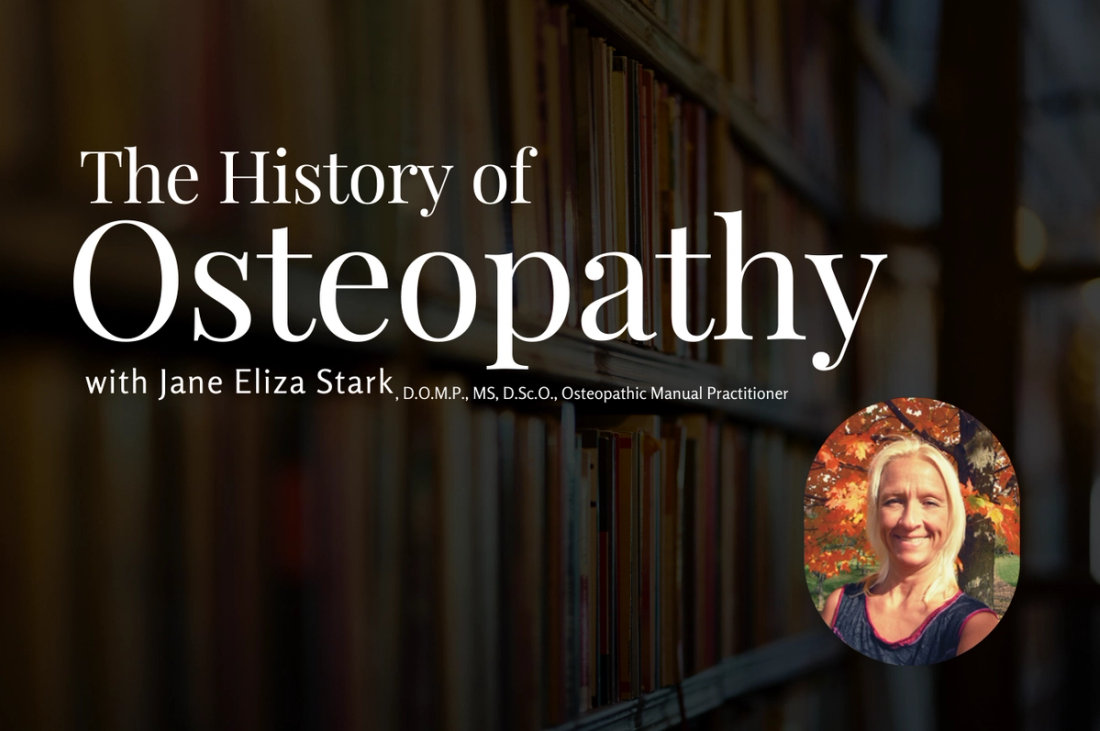The History of Osteopathy

Becoming a proficient osteopathic practitioner is a lifelong process. Although many components will contribute to one’s development, a key element in becoming a capable and respected practitioner is the ability to think for yourself and to do so in a critical manner. The ability to think critically emanates from the assimilation of information into knowledge. In an osteopathic education, the process of incorporating information is derived not only from the biological and physical sciences, but also from a study of the humanities—including history and philosophy. Reasoning critically, as it relates to osteopathic practice, helps to develop hands on-skills, inform clinical decision making, and enrich the patient-practitioner rapport. Critical thinking is derived from the ownership of that knowledge and is applied using common sense.
Practicing Osteopathy without an understanding of osteopathic history and philosophy would be similar to someone who wanted to become a Circuit Rider Preacher of Pioneer times, but who had never read the Bible or had prior religous training. History gives perspective and context to one’s field of endeavour. Philosophy helps to develop the ownership of one’s thoughts. A preacher who hasn’t read the Bible is neither inspiring nor believable.
In a colourful and informative manner, this course will provide the most pertinent details of osteopathic history and the foundations of its philosophy, enhancing the process of mastering Osteopathy versus the common scenario of practitioners imitating misunderstood techniques, and frequent use of often distorted phrases without the ownership of the original intended meaning. By attending this seminar you’ll find out why you were afforded the opportunity to become a member of the Osteopathic Tradition and how you can maximize that prospect.
The main topics covered in the seminar include the following:
· Using historical method to distinguish an historical fact from a probability or possibility.
· Recognizing the leading osteopathic historians and history resources.
· Essentials of studying systems in the context of their environments.
· Biographies of Still, Littlejohn, and Sutherland.
· Still’s writings and development of Osteopathy as they relate to national issues of his time, including several wars fought in the US, slavery, Andrew Carnegie, the Industrial Revolution, the railroad expansion, the Indian Relocation Act, the Missouri Compromise, poetry, spiritualism, and much more.
· The influence of medicine and medical therapeutics on Still’s development of osteopathy, including heroic medicine, magnetic healing, massage, bone setting, and medical democracy.
· Still’s practical approach with respect to bones, organs, mesenteries, fluids, fascia, and nerves.
· The influential friends that kept Still in Kirksville.
· The history of the American School of Osteopathy from its 1892 inception until 1900.
· The growth and waning of osteopathy’s popularity in Kirksville.
· The Flexner Report
· The competition among schools of osteopathy that led to DO/MD training equivalency.
· The political battles between orthodox medicine and osteopathy and between the two osteopathic factions,
· The California Merger.
· The proper chronology of osteopathy’s and chiropractic’s founding.
· Brief history of osteopathic origins in England, and France.
· The deeper meaning behind the phrase,
· The history of osteopathic principles.
· Thoughts on osteopathic philosophy.
Instructor: Jane Eliza Stark